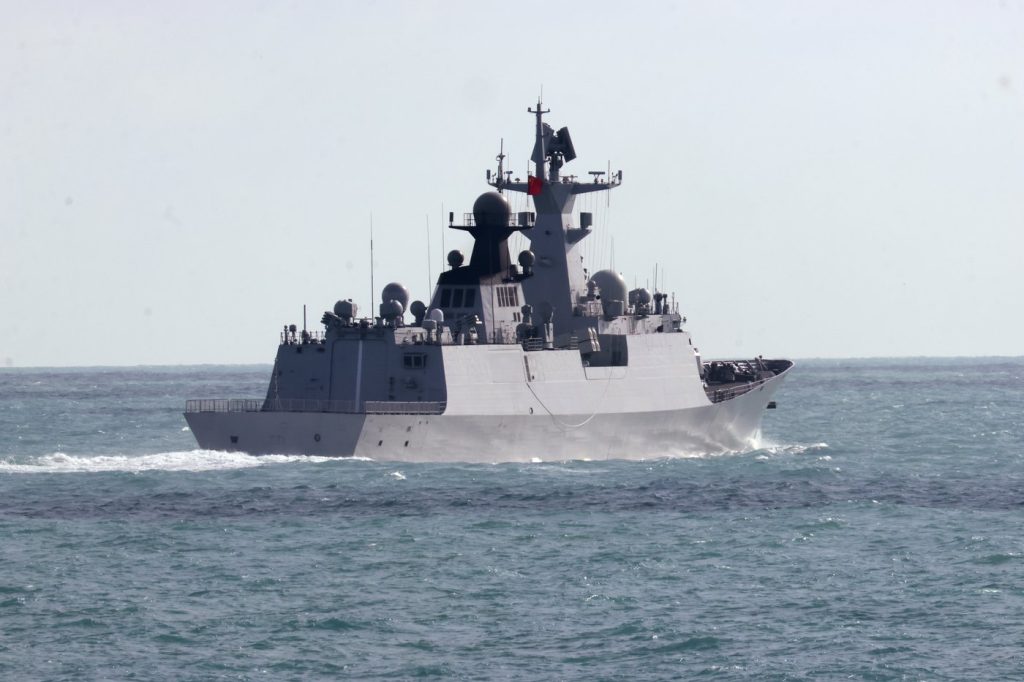WELLINGTON, New Zealand — Leaders in Australia and New Zealand have expressed concerns over China's recent naval activities, particularly its live fire exercises conducted in the Tasman Sea, which caught both nations off guard. The exercises forced the diversion of commercial flights between the two countries, leading to demands for better communication from China regarding military maneuvers in the region.
According to reports, the live fire drills by three Chinese warships took place in international waters during Friday and Saturday, specifically beneath a busy commercial air corridor over the Tasman Sea, which stretches approximately 1,200 miles (2,000 km) between Australia and New Zealand. The Australian government noted that these vessels were operating closer to its shores than usual and were in Australia's exclusive economic zone, raising concerns from officials.
Even though Australian Defense Minister Richard Marles highlighted that the incident was "not unprecedented, but unusual," leaders in both Canberra and Wellington criticized China's lack of prior notification. New Zealand's Defense Minister Judith Collins pointed out that the warnings from the Chinese vessels were given just "a couple of hours" in advance, rather than the expected 12 to 24 hours. While China was not legally obligated to provide such notice, the unexpected nature of the drills raised alarms and prompted officials from New Zealand to seek reassurances from the Chinese embassy regarding future military activities.
Despite the lack of confirmed live fire during the exercises on Friday, New Zealand's navy reported sighting firing from the Chinese warships on Saturday. Political leaders from both countries made it clear they did not wish to escalate tensions but emphasized the importance of forewarning about military operations in the maritime region. Australia's Prime Minister and other officials stopped short of overtly criticizing China but acknowledged the strategic implications of such actions.
China is the largest trading partner of both Australia and New Zealand, and this incident follows a cautious thawing of relations between Beijing and Canberra after a period of tension marked by a Chinese trade freeze on various Australian goods. However, this newfound diplomatic momentum is now under scrutiny, especially as analysts like Michael Shoebridge indicate that the recent naval exercises could undermine the Australian government’s narrative of stabilizing ties with China. Shoebridge noted that such activities reflect China's growing assertiveness and aggression in the region.
Contrary to the concerns raised by Australia and New Zealand, Chinese officials have rejected claims of inadequate warning. A spokesperson from China's Defense Ministry, Wu Qian, asserted that the Chinese naval vessels had issued safety notices in advance of their live fire exercises. Wu characterized the reactions from Australian leaders as "unreasonable accusations" that exaggerated the situation.
Experts suggest that the timing of these drills could be linked to rising military relations between Australia and countries in Asia, such as Japan and the Philippines, particularly amid ongoing territorial disputes involving China. This heightened military presence grapples with China’s strategy to isolate those nations and expand its influence in the South Pacific, an area of increasing strategic importance for all parties involved.
The drills also represent a warning from China regarding its ambitions in the South Pacific, particularly as it seeks security agreements with smaller island nations in the region. This development raises concerns in Canberra and Wellington about a potential territorial contest occurring closer to home, fostering anxiety among Pacific leaders who resent being scrutinized by larger nations regarding their foreign relations.
As nations navigate this complex geopolitical landscape, it is evident that the nuances of military engagement and communication will play a pivotal role in shaping future interactions, not only between China and its neighbors but also within the broader South Pacific region.










